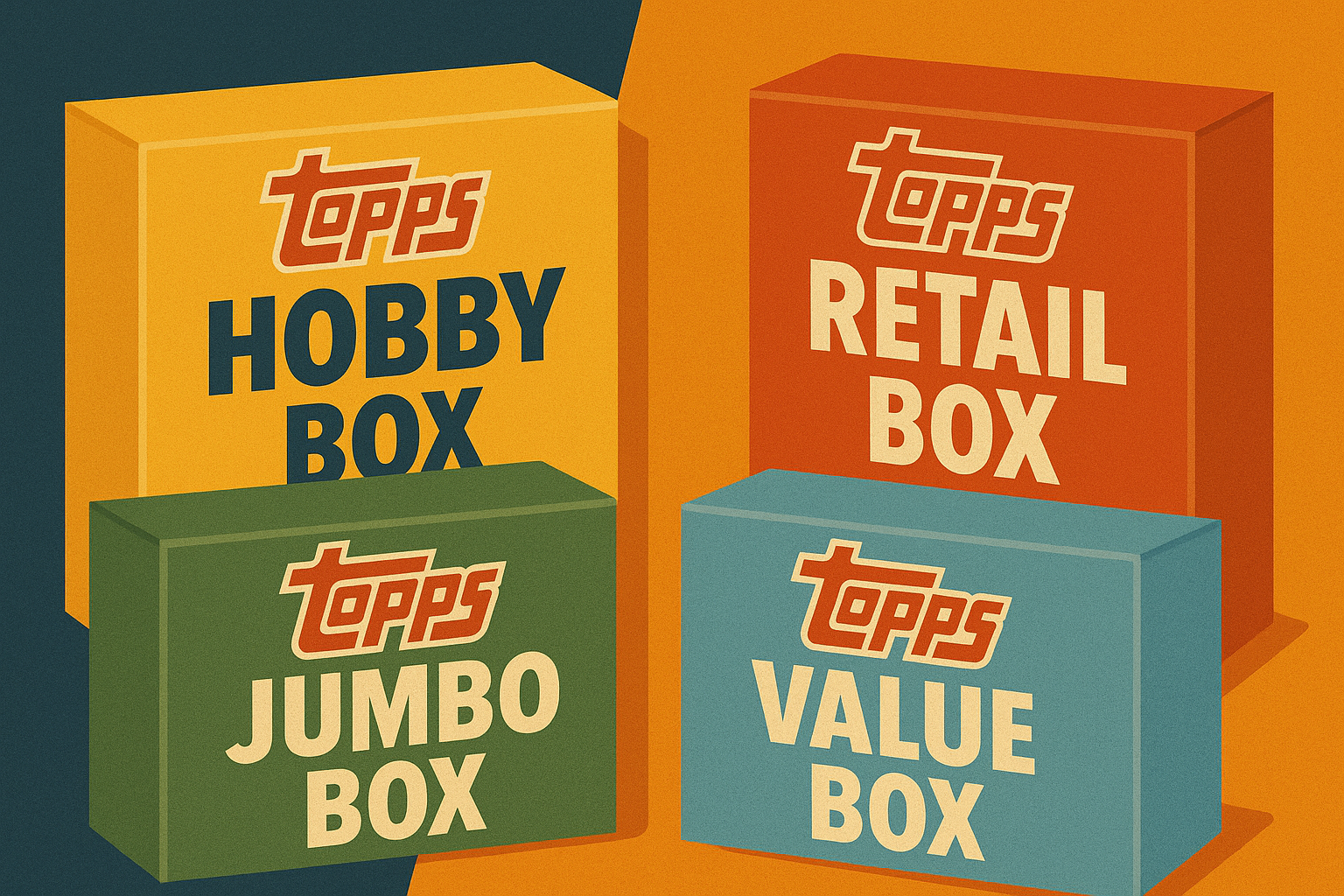My son has developed a genuine passion for sports card collecting that goes far
beyond a simple hobby. What started as a few packs of cards quickly turned into
a deep appreciation for the stories behind each player, the excitement of
discovering rare inserts, and the joy of building a personal collection. He
spends hours researching players, tracking card values, and organizing his
collection with care—always eager to share his latest finds and learn more about
the game.
What’s most inspiring is how this passion has sparked a sense of
entrepreneurship in him. He’s learned how to spot value, negotiate trades, and
even sell cards online, all while staying grounded in his love for the hobby.
It’s not just about collecting—it’s about connecting with a community, learning
real-world skills, and turning a personal interest into something truly
meaningful.
💡 Note: Links to his store/website at the bottom of this post
After years of collecting sports cards and recently diving deeper into the
selling side, I’ve learned that success on eBay isn’t just about having great
cards—it’s about understanding the market and presenting your inventory
effectively. Whether you’re decluttering your collection or running a side
business, mastering comparables (comps) and crafting stellar listings can be the
difference between cards sitting unsold and quick, profitable sales.
The Foundation: Understanding Comparables
Comparables, or “comps,” are the lifeblood of sports card pricing. They’re
recently sold listings of the same or similar cards that help establish market
value. But finding accurate comps is more nuanced than just searching eBay’s
sold listings.
The Hierarchy of Comps
Not all comps are created equal. Here’s how I prioritize them:
- Exact Match Sales (Same card, grade, grading company)
- Same Player/Year/Set (Different grade by 0.5-1.0)
- Parallel Variations (Same card, different color/number)
- Raw vs. Graded (Apply appropriate multipliers)
- Cross-Grading Company (PSA vs. BGS vs. SGC conversions)
Where to Find Reliable Comps
Primary Sources:
- eBay Sold Listings: Filter by sold items, sort by recent first
- 130point.com: Aggregates sales data across platforms
- PWCC Marketplace: High-end auction results
- COMC.com: Fixed-price sales data
Secondary Sources:
- Card Ladder: Tracks specific card values over time
- Sports Card Investor: Market indices and trends
- Facebook Groups: Real-time market feedback
- Discord Communities: Quick price checks from experienced sellers
Advanced Comp Techniques
The 3-Sale Rule: Never rely on a single sale. Find at least three recent
sales (within 30 days) to establish a range.
Outlier Detection: Ignore sales that are 40%+ above or below the
average—these often indicate:
- Desperate sellers
- Auction snipes at 3 AM
- Condition issues not visible in photos
- Money laundering (yes, it happens)
Seasonal Adjustments: Rookie cards spike during hot streaks, vintage surges
before Hall of Fame announcements. Factor timing into your analysis.
The Science of eBay Listings
Once you’ve nailed your pricing, the listing itself becomes your sales pitch.
Here’s my proven formula:
Title Optimization
Your title has 80 characters—use them wisely. My template:
[YEAR] [BRAND] [PLAYER NAME] [CARD NUMBER] [PARALLEL/INSERT] [GRADE]
Example:
“2018 Panini Prizm Luka Doncic #280 Silver Prizm RC Rookie PSA 10 Gem Mint”
Pro Tips:
- Include “RC” and “Rookie” for rookie cards (redundancy helps search)
- Add team names for popular franchises
- Use “SSP” for short prints, “SP” for variations
- Include grading company acronym AND grade number
Photography That Sells
Bad photos kill sales. Here’s my setup:
Equipment:
- Natural lighting or LED panel (avoid harsh shadows)
- Neutral background (I use white or black foam board)
- Penny sleeve + toploader for protection
- Phone camera is fine—consistency matters more than equipment
The 6-Photo Method:
- Front full card (straight on)
- Back full card
- Close-up of any flaws/features
- Angle shot showing card thickness/edges
- Certification label (for graded cards)
- Light angle shot to show surface/refractors
Description Best Practices
Your description should answer every possible question:
**Card Details:**
- Player: [Name]
- Year/Brand/Set: [Details]
- Card Number: [#]
- Condition: [Detailed assessment]
- Grading: [Company, Grade, Cert #]
**Shipping:**
- Ships within 1 business day
- USPS First Class with tracking
- Cards shipped in penny sleeve, toploader, team bag
- Bubble mailer with cardboard reinforcement
**Note:** [Any specific details, centering issues, print lines, etc.]
Pricing Strategies
Buy It Now vs. Auction:
- BIN: Control your price, best for established values
- Auction: Let the market decide, good for rare/hot cards
- BIN/Best Offer: My favorite—set high, accept reasonable offers
The 85% Rule: Price BIN at 85-90% of recent comp average. This accounts for:
- eBay fees (12.9% for most sellers)
- Market fluctuations
- Buyer psychology (everyone loves a “deal”)
Psychological Pricing:
- $49.99 beats $50
- $97 often outperforms $99
- Free shipping sells (build cost into price)
For Comps:
- Market Movers app (real-time auction tracking)
- The Hobby app (quick sold listings search)
- Cardbase (inventory tracking with values)
For Listings:
- eBay mobile app (draft on desktop, photos on mobile)
- Lightroom mobile (batch photo editing)
- TextExpander (reusable listing templates)
Common Mistakes to Avoid
- Overvaluing Your Cards: Your childhood memories don’t add monetary value
- Poor Packaging: One damaged shipment ruins your reputation
- Ignoring International Buyers: Use Global Shipping Program
- Not Tracking Expenses: Every toploader and stamp counts
The Long Game
Success in sports card selling isn’t about hitting home runs on every card. It’s
about:
- Consistent, quality listings
- Building positive feedback
- Understanding market cycles
- Reinvesting profits wisely
- Treating buyers how you’d want to be treated
After listing hundreds of cards, I’ve learned that the sellers who thrive are
those who treat it like a business—even if it’s just a hobby. Know your costs,
track your sales, and always be learning.
The sports card market can be volatile, but with solid comps research and
professional listings, you’re positioning yourself for success regardless of
market conditions. Remember: every professional seller started with their first
listing. Make yours count.
Links
What are your go-to strategies for pricing and listing sports cards? Share your
tips in the comments below.







